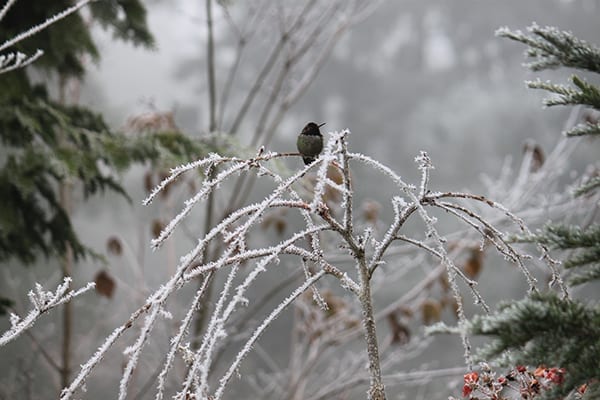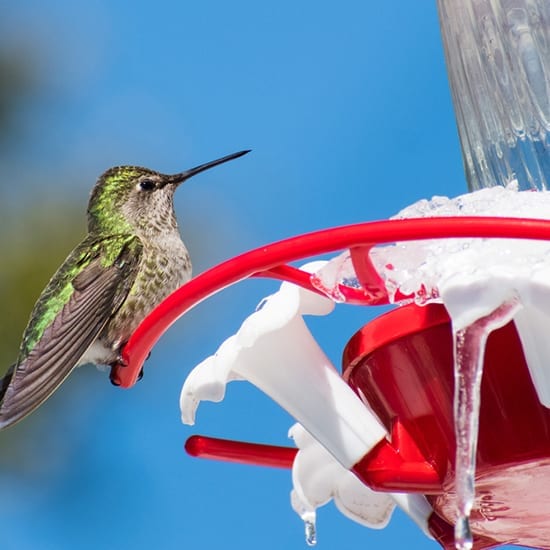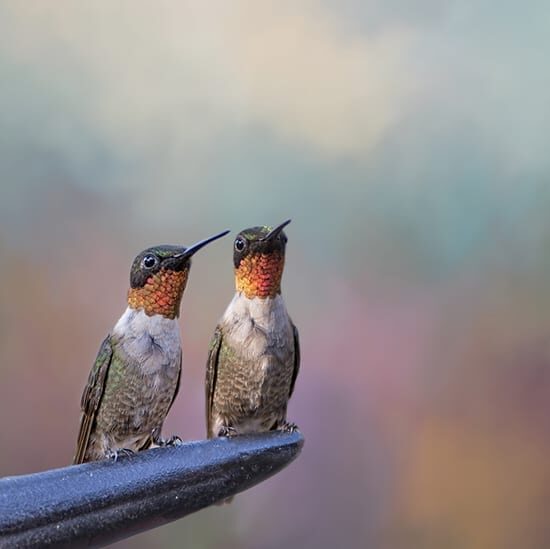In 2018, many people reported that very few of their Ruby-Throated Hummingbirds had returned. Some people reported that they had none at all! … Gulp!
Migration for hummingbirds is dangerous; Maybe more like death-defying.

In Fall, when many hummingbirds are migrating south, it’s hurricane season from Central America through Texas. The young hummingbirds are the last to leave in Fall. They stay as long as possible to gain as much weight as they can for their journey. The more weight, the more energy. If only it worked like that for us.

In Spring, extra early arriving hummers may have to deal with late wintry cold spells. In April, 2018 the Midwest through New England had very cold, snowy, windy weather… for four days. It would have been very difficult for any early arriving hummers to survive. To make things worse, many people reported that they didn’t put out their feeders due to the wintry weather. Yikes! That’s when their hummers needed a feeder more than ever. It takes a lot of calories to be a hummingbird and cold weather greatly increases their need for calories. With the wintry weather and no food, well… no need to state the obvious. The good news is that many still hadn’t migrated. So some people still had plenty of hummers. Whew!
To add to their challenges, half of young hummingbirds don’t survive to return. With banding, we’re learning more about when, and where, they disappear. It’s no secret that feeding them has helped many survive as well as increase their range.

Getting your feeders out just before your hummingbirds arrive will not only help them survive but it greatly increases your chances to steal the neighbors’ hummingbirds. Just admit it. That’s what you really want. Beat the neighbors and find out when the hummingbirds are getting close by checking the Migration Map. If you get some late, cold weather you can easily MacGyver a DIY feeder warmer we wrote about in our previous post, “Feeding Hummingbirds in Freezing Weatherâ€

